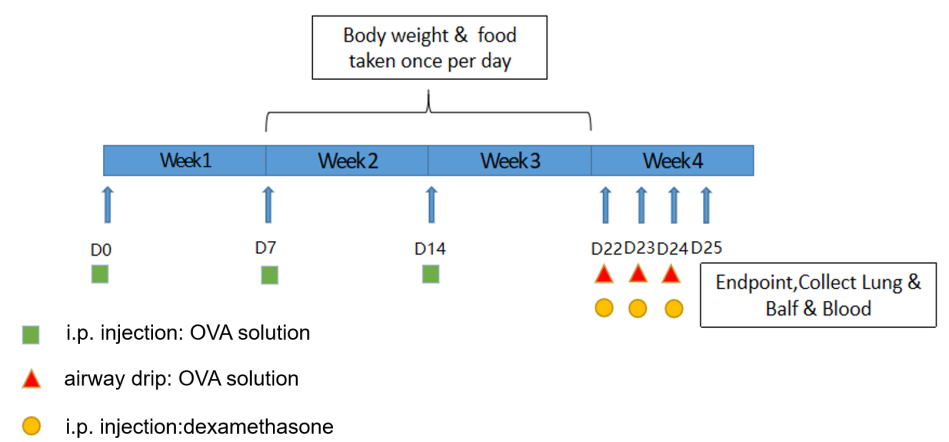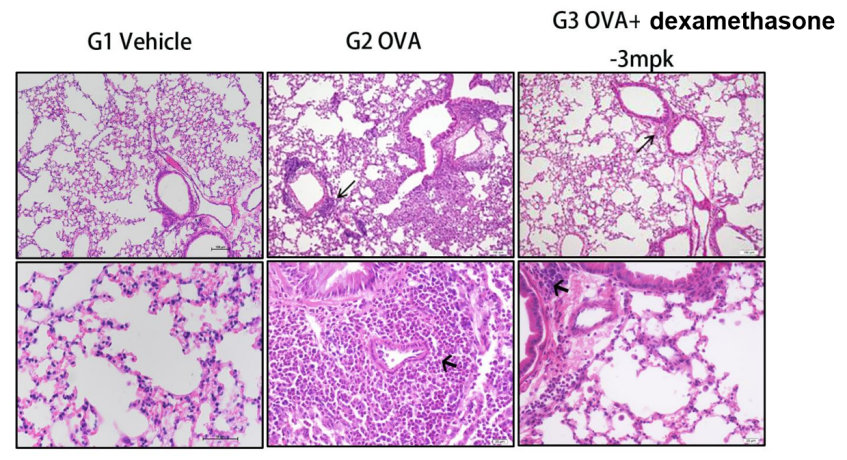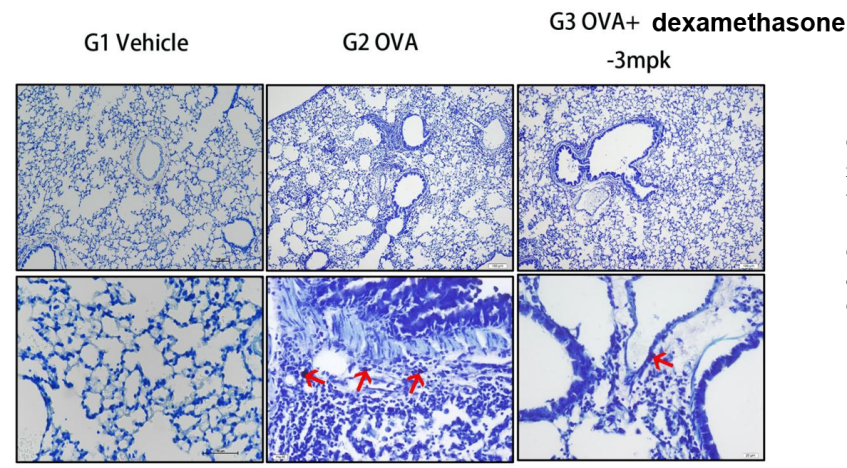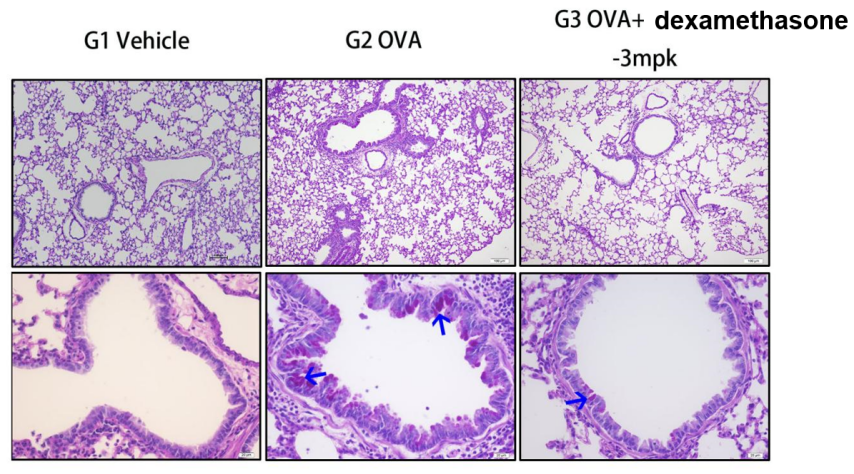Asthma is a common chronic inflammatory disease of the airways, characterized by wheezing, coughing, chest tightness, and dyspnea. The pathogenesis of asthma is very complex. Animal models of asthma are helpful for the study of disease mechanisms or new therapies of asthma.
Modeling strategy

Validation data
1. HE Staining

Inflammatory cells were showed by black arrows. Bar=100 μm in the top row. Bar=20 μm in the bottom row.
Compared to G1, G2 showed moderate to massive infiltration of inflammatory cells including eosinophils, mast cells, lymphocytes, macrophages, and neutrophils surrounding the airways and vessels of the lungs. Compared to G2, G3 showed significantly reduced inflammatory cell infiltration surrounding the airways and blood vessels.
2. 0.05% Toluidine Blue Staining

Mast cell degranulation was showed by red arrows. Bar=100 μm in the top row. Bar=20 μm in the bottom row. Compared to G1, G2 showed occasional degranulation of mast cells in the interstitium of the lungs. Compared to G2, G3 showed rare mast cell degranulation in the interstitium of the lungs.
3. PAS Staining

Mucus attachment was shown by blue arrows. Bar=100 μm in the top row. Bar=20 μm in the bottom row.
Compared to G1, G2 showed moderate to abundant PAS-positive mucous material in the bronchi or bronchiolar mucosal epithelium. Compared to G2, G3 showed only occasional PAS-positive mucous material in the mucosal epithelium of the bronchi or bronchioles.

